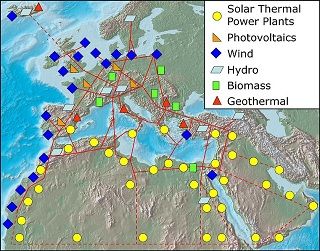Migration To Smart-Grid Requires New Thinking
EPRI, the Electric Power Resource Institute, is a non-profit organization that functions to perform research and provide assistance in the development of advanced systems in generation, delivery and use of electricity. I’m sure there was a time a few decades ago that there really wasn’t too much going on in this space, but that’s certainly not the case now. That’s why I wanted to make sure I included an interview with a spokesperson from EPRI in my first book, Renewable Energy – Facts and Fantasies; Mark Duvall, whom I had met at numerous conferences, was kind enough to oblige.
It’s fairly obvious that in the integration of electric vehicles, energy storage, demand response, and large amounts of distributed (and intermittent) solar PV, concentrated solar power and wind will require cutting-edge thinking and the implementation of new standards. Moreover, all this is happening under the banner of “smart grid,” meaning the two-way flow of information between the generation source and the load.
Those of you trying to follow the migration to smart grid may be interested in this white paper from EPRI, whose abstract is as follows:
No portion of the electric power grid has been impacted more by grid modernization (that is, the “smart grid”) than the electric distribution system. A central part of this transformation is the distribution management system (DMS), which integrates numerous remote monitoring and central control facilities with enterprise-level systems to optimize distribution system performance and accomplish a variety of business goals. At the same time, distributed energy resources are often connected to the grid at the distribution level, and distribution operational requirements are impacted by their presence. The power inverters that connect solar photovoltaic and battery resources to the grid are highly capable devices with advanced message processing and fast power control and nearly instant response to received commands and monitored conditions. This white paper describes ongoing research at the Electric Power Research Institute (EPRI) that is exploring various ways in which the DMS can use these resources more effectively and help in accomplishing the 21st century objectives of electric distribution utilities.

